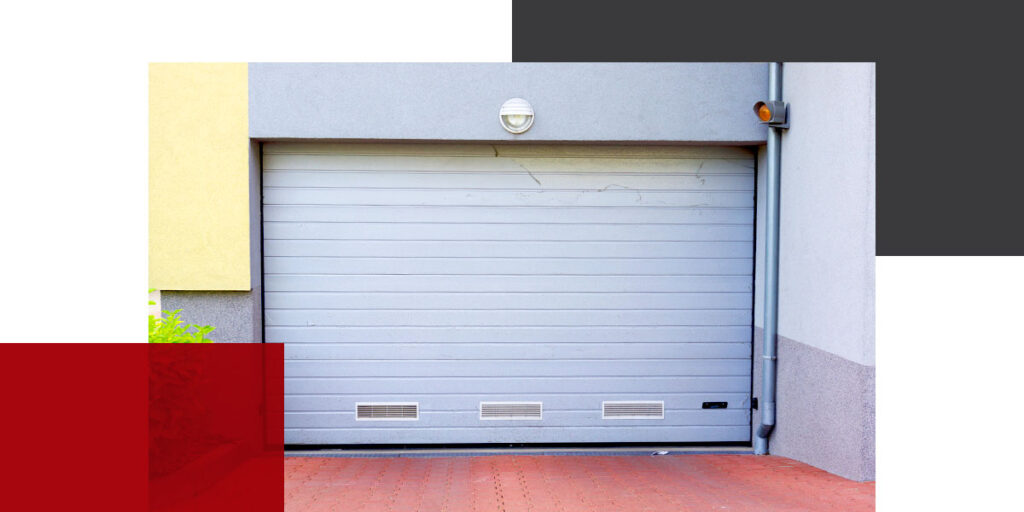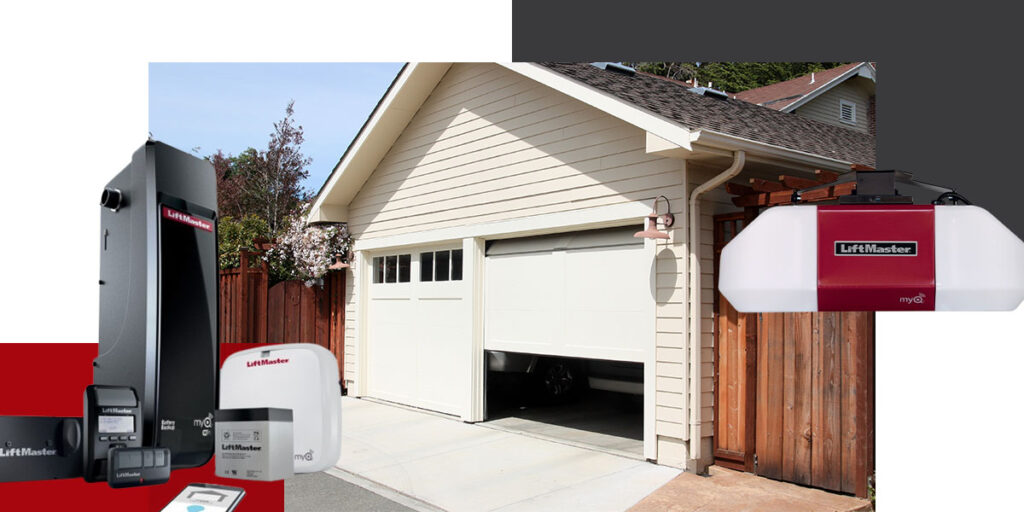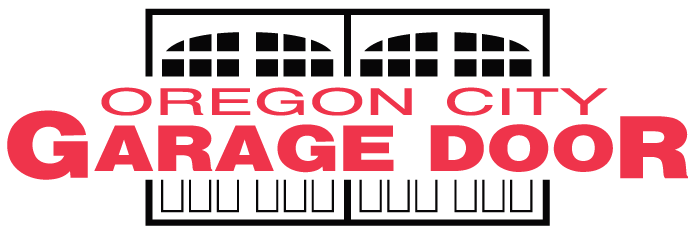Best Type of Garage Door for a Pole Barn Garage

With its wide open spaces and high ceilings, a pole barn design is one of the most popular detached garage styles. While planning your garage build, every detail must be thought out — including the right garage door for the right garage.
Let’s discuss some garage door options for your pole barn garage.
Pole Barn Garage vs. Stick-Built Garage
In the world of detached garages, two styles reign supreme — pole barn and stick-built garages. While you may be more familiar with stick-built construction methods, many homeowners prefer the ease and durability of pole barn garages.
Stick-built garages have a concrete foundation with a wood-framed structure built piece by piece on top of the foundation. This type of construction allows for more walls and customization options.
Pole barns were originally used in agriculture. This type of garage uses post-frame construction methods, with durable wooden poles driven deep into the ground. These posts serve as the main framing elements for the garage. Pole barn garages are quick, durable builds that tend to be more affordable.
What Is the Best Type of Garage Door for a Pole Barn Garage?
There are two main types of pole barn doors — sliding and overhead. While sliding doors are the more traditional option for agricultural pole barn constructions, an overhead door offers more benefits for detached garages:
- Automated: Overhead pole barn garage doors can be used with automatic door openers. Most people don’t want to jump out of their car to pull in or out of their garage, so automation is a huge benefit.
- Sealed: Most sliding doors are not sealed, which can allow dirt, moisture, bugs and other critters inside. Overhead doors are sealed to protect the interior.
- Insulated: Insulation means you can better control temperatures, allowing you to utilize this space for more than storage. Keep your car, equipment and anything else you own in your garage safe from extreme temperatures
- Cost: While overhead doors tend to cost more than sliding pole barn doors, this price tag comes with a lot of benefits, including modern features and often a manufacturer’s warranty.
Need Help Finding a Garage Door for Your Pole Barn Garage?
If you need help finding the right door for your pole barn garage, turn to the experts at Oregon City Garage Door. We can discuss your ideas to help you find a perfect option. We also offer free estimates on new garage door installations. Request a quote online or give us a call at 503-664-9982.
How to Remove Rust From a Garage Door

Rust takes a toll on metal garage doors. This destructive force can weaken your garage door over time and produce cracks or holes. Rust can also detract from the door’s appearance and reduce your property’s curb appeal.
Garage door rust spreads rapidly, so it’s imperative to address it as soon as you notice it. Painting over rust spots without removing them first only provides a temporary fix because it won’t deter the underlying rust formation. However, it’s possible to remove it before it consumes the door’s surface.
How to Repair Garage Door Rust
If you catch rust on your garage door early, you may be able to remove it and repair the damage in a few steps:
- Cleaning: Fill a bucket with warm water and dish detergent. With the door closed, use a rag and a large sponge to clean off as much dirt and debris as possible.
- Scrubbing: Fill a second bucket with white vinegar and soak a rag in it for several minutes. Alternate rubbing the rust spots with a steel wood pad and the rag until you’ve removed all the rust.
- Sanding: Use a small piece of sandpaper to sand the rust-damaged areas on the door.
- Priming: Apply a zinc-chromate primer to the affected areas with a paintbrush. This preventive step can stop future rust formation.
- Painting: Allow the primer coating to dry completely before painting the affected areas with a color that coordinates with your door.
When to Get Professional Assistance
If rust has advanced too far for you to remove it yourself, you may need to contact a professional garage door company. Extreme rust may require a panel replacement. At Oregon City Garage Door, our experienced technicians can perform this common repair task and have your door looking like new.
We can also help if rust has completely overtaken your garage door and you need a replacement. We offer a wide assortment of products from Clopay®, North America’s leading garage door manufacturer. We’ll help you select the best door for your needs and budget and perform a fast, seamless installation.
Contact Us to Learn More
At Oregon City Garage Door, we’ve been providing premium garage door products and services in Portland and the surrounding areas since 1992. If you need to remove rust from a garage door, our experienced team is ready to help. Contact us for additional information or to schedule a convenient service appointment today.
Residential vs. Commercial Garage Doors

Commercial and residential garage doors share the same basic function — they let vehicles and people in and out of garages. While a residential door offers access to your home’s garage, you’ll find commercial doors in industrial settings. However, location is not the only difference between these two types of doors, as each design boasts unique features and structural elements that make it ideal for its target application.
The Differences Between Residential and Commercial Garage Doors
When you compare the two, there are distinct pros and cons to commercial garage doors versus residential units. Comparing factors like cost, appearance, size and material make it apparent why the different classifications exist.
Appearance
Residential garage doors come in many different colors, and some designs include decorative windows and added accessories. As such, choosing a residential door design that complements your home’s appearance can significantly boost its curb appeal. Meanwhile, commercial doors have a more straightforward design, as it is more important for them to be functional than attractive.
Price
When comparing commercial vs residential garage door prices, you’ll find that commercial doors are significantly more costly. In making these doors, manufacturers use expensive, durable materials that stand the test of time even with frequent use. Additionally, these heavy doors also require special door openers that can handle their weight and perform many opening cycles.
Size
Size is the primary marker of what makes a garage door commercial or residential. Residential doors typically measure around 7 feet in height and 8 or 9 feet in width. You can customize your home’s garage door to accommodate motorhomes, but even large residential doors are still considerably smaller than commercial versions. Commercial overhead doors are typically about 32 feet wide and 24 feet tall, but they may be even larger.
Material
When choosing a type of material for a residential door, homeowners often consider durability, price and aesthetics. They might opt for wood, glass, fiberglass, steel, aluminum or composite doors to find an attractive design that fits their budget and expectations.
While a residential door will likely be cycled two to four times a day, a commercial door may open and close many times in a single workday to accommodate shipping needs. Because the appearance of these doors is less important than their performance, manufacturers only use the most durable materials in their construction, with galvanized steel and aluminum being common choices.
Find the Right Door for Your Home or Business
Oregon City Garage Door provides you with an impressive selection of residential and commercial doors. To ensure you find the right design, we stock products from industry leaders like Clopay®, Amarr Garage Doors and Northwest Door. Contact us to learn more about our services or request an estimate online for a residential or commercial garage door today!
How to Lubricate Your Garage Door

With the right care, your garage door is much more likely to stand the test of time. A well-lubricated door opens and closes smoothly and has a longer life span. To keep your garage door at its best and limit the noises it makes during operation, you’ll want to lubricate it about every six months.
What Is the Best Lubricant for Garage Doors?
The best lubricant for garage doors is a specially formulated spray containing silicone or white lithium grease. These sprays typically come with a long straw attachment that makes them easy to apply in tight spaces. You can also wipe white lithium grease onto metallic surfaces by hand. Avoid using substances like WD-40, engine oil or mechanic’s grease, as they tend to attract dirt and dust buildup.
How to Use Garage Door Lubricants
Lubricating your garage door is a relatively quick process. Follow these six simple steps:
- Shut your garage door and power off the opener.
- Clean the inside and outside of the tracks with a damp cloth. If you find excess grime that won’t come off easily, try automotive brake cleaner to break it down for removal. Avoid using lubrication on the tracks, as it will impede the function of the rollers.
- Open the door and spray or wipe the hinges with grease. You can then move on and lubricate the rollers — be sure to grease the small ball bearing inside each roller. Remember to remove any extra lubricant to ensure your door stays balanced.
- Using a step ladder, lubricate the bearings and springs. The bearings are located along the top of a garage door, and the bearing plates are on each side of the springs. After thoroughly lubricating these parts, open and close the door to ensure the grease gets evenly distributed.
- Spray grease on the top rail and arm bar. Distribute the lubricant evenly along the top rail with a cloth. You do not need to grease the chain, as it has its own lubricant.
- Lastly, apply lubricant to the lock on the garage door to safeguard it against rust, then open and close your door to confirm that it is working smoothly.
Trust the Pros to Service Your Garage Doors
Preventive maintenance is key to keeping your garage door at its best. If you’d rather leave this task to the professionals, the team at Oregon City Garage Door is here for you. We’ve been installing and servicing garage doors since 1992, so we know the best lubricants and the right techniques to keep your installation at its best.
Along with maintenance and repair services, we offer emergency appointments to address garage door problems quickly. Contact us for more information or use our booking tool to schedule a service online at your convenience.
Overhead vs. Wall Mounted Garage Door Openers

A garage door opener is a convenient device that opens and closes your garage door with the push of a button. This motorized feature comes in two main types — overhead garage door openers and wall mounted styles. If you’re looking to replace your opener, it’s important to understand the features, requirements and benefits of these two choices.
What Is a Wall Mount Garage Door Opener?
Also called a side mount, a wall mount garage door opener features a mechanism installed on the wall beside your garage door. This sleek and quiet space-saving solution does not require overhead space, making it a great option for garages with low ceilings, limited headroom or irregularly shaped ceilings.
What Is an Overhead Garage Door Opener?
Overhead or ceiling mount garage door openers are mounted on your garage’s ceiling. This more traditional system features a motor and track that lifts and lowers the garage door. Overhead openers are known for their durability and heavy-lifting capabilities, making them excellent for oversized or heavier doors.
Differences Between Wall Mount and Overhead Garage Door Openers
Each opener type has its advantages and disadvantages. Your final decision will likely depend on various factors, including your garage’s size and shape, your preferred features and your budget.
Wall Mount and Overhead Garage Door Opener Pros and Cons
Let’s examine some of the pros and cons of each garage door opener design. Below, learn about the side mount opener.
- Wall mount pros: This style is great for low or irregularly shaped ceilings and allows you to maintain your ceiling space for storage. Side mount models are easier to access if repairs or maintenance is needed.
- Wall mount cons: These models move the door from a lower point and often cannot lift heavier garage doors. They also require an electrical outlet next to the door.
Now, explore the benefits and drawbacks of ceiling mount garage door openers.
- Overhead pros: This time-tested design is reliable. It efficiently lifts heavier doors and allows homeowners to choose from a wider array of door styles and advanced features.
- Overhead cons: Ceiling mounted openers take up ceiling space, potentially denying overhead storage. Overhead mechanisms can also be louder.
Overhead vs. Wall Mounted Garage Door Opener Prices
Wall mounted openers are generally a more affordable option, great for homeowners on a tighter budget. However, durable overhead garage door openers are more powerful and often come with additional features, making them a premium choice for those willing to invest.
Get Expert Guidance From Oregon City Garage Door
If you need help choosing the right opener, turn to the team at Oregon City Garage Door. We provide expert installation of garage doors and openers so that you get years of smooth operations from your investment.
With competitive pricing, quick turnaround times and free estimates, we’d love to discuss your garage door needs. Contact us today to learn more about our services.
